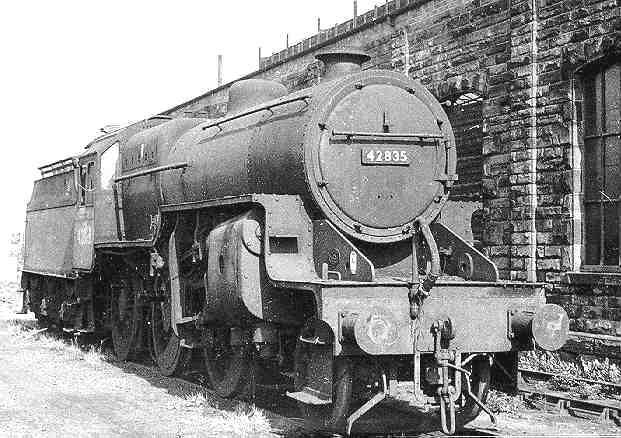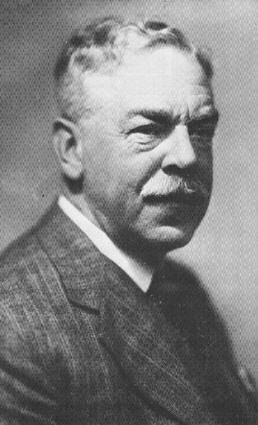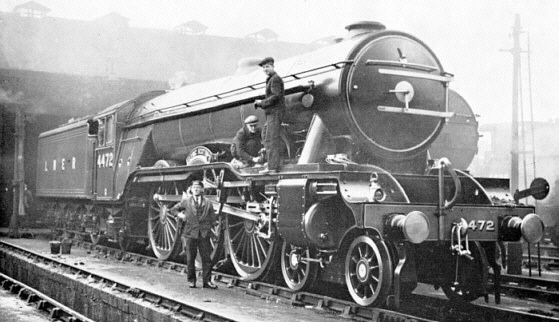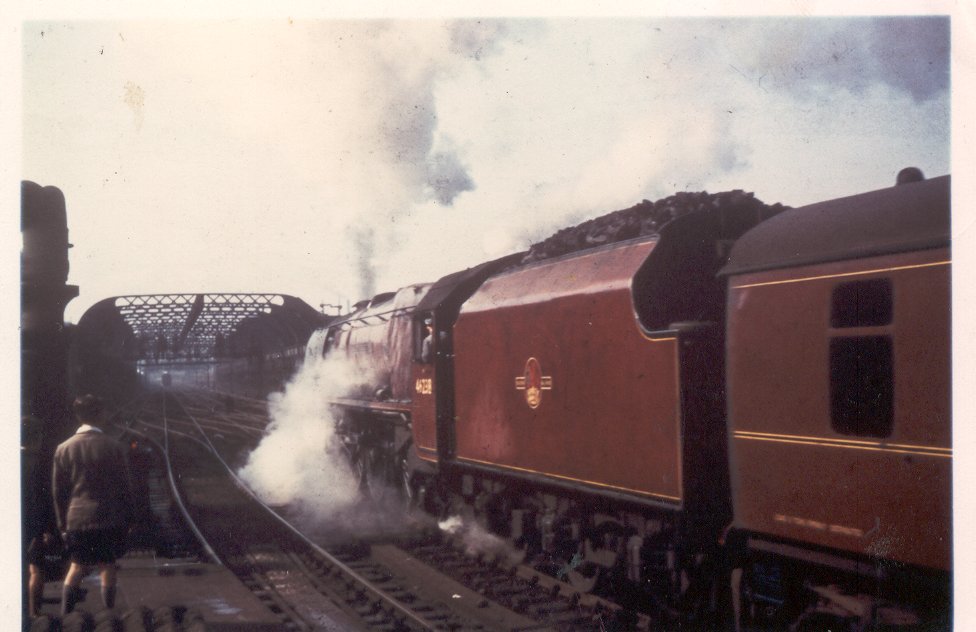

| The CRYPT Mag |
Our thanks go to Mr. I. Fyvie, The Watercress Line, Mr. T.
Knowles,
Mr.S. Smalley, The North Norfolk Rly., Severn Valley Rly., Mr.Chris Adams
and countless others for their assistance in this production.

Hello again, and welcome back. This time out, we'll be looking
at the profiles of
various engineers of the "great four" railway companies, along with
a few
pictures of their efforts.
George Hughes (1865-1945)
George Hughes first worked on the railways as an apprentice for the London &
North Western Railway at Crewe, under F.W.Webb. In 1895 he joined the
Lancashire & Yorkshire Railway, becoming principle assistant for carriages
and
wagons. In 1899 he became works manager at Horwich, then Chief Mechanical
Engineer 1904-21.
Along with George Jackson Churchwood,of the Great Western Railway, he was
a British pioneer in the use of firetube superheaters, first applied to 0-6-0s
in
1906 and 4-4-0s in 1908 where, combined with long-lap, long-travel piston
valves, economy and performance was greatly improved.
In 1922, he became CME of the combined L.N.W.R. and L&YR. He then
became CME of the London Midland & Scottish Railway 1923-25, where realising
the need for more powerful locomotives, produced designs for 4-6-2 passenger
and 2-8-2 freight locos, which unfortunately were never built. However, after
he
retired, 245 locos of his excellent mixed traffic 5P/4F Crab 2-6-0s were built
by Sir
Henry Fowler, most of which survived until the end of steam.

-----------------------------
London and North Eastern Railway
The London and North Eastern Railway or LNER was the second-largest of the
"Big Four" railway companies created by the Railways Act 1921 in Britain,
and
existed from 1st January 1923 until nationalisation in 1st January 1948.
The public face of a railway system was, in greater part, the locomotives and
rolling stock in service upon it, and therefore the personalities of the Chief
Mechanical Engineers of the LNER impressed their distinctive visions upon the
railway. There were three CMEs of the LNER.
Sir Nigel Gresley
Sir Nigel Gresley was the first CME and held the post for the greatest
proportion of the LNER's life, and thus he had the greatest effect on the
company. He came to the LNER via the Great Northern Railway, where he also
held the post of CME. He was noted for his "Big Engine" policy, and
is best
remembered for his large express passenger locomotives, many times the holder
of the world speed record for steam locomotives. LNER A4 Pacific class
locomotive Mallard holds the record to this day. Gresley died whilst still in
office
in 1941.

Edward Thompson
Edward Thompson's short reign (1941-1946) was a controversial one. A noted
detractor of Gresley even before his ascension to the post of CME, there are
those who interpret many of his actions as being motivated by dislike of his
predecessor. Against this it must be said that Gresley's designs had their flaws
as well as their brilliance. His record is best served by his solid and dependable
freight and mixed-traffic locomotives built under wartime conditions. He retired
in 1946, having been responsible for several classes of dependable locos.

Arthur H. Peppercorn
Peppercorn's career was cut short by nationalisation and he only served 18
months in the position of CME. In this short period and in an atmosphere of
reconstruction rather than great new endeavours, his only notable designs were
his A1 and A2 Pacific express passenger locomotives, most of which were
completed after nationalisation. Peppercorn was a student and admirer of
Gresley and his locomotives combined the classic lines of Gresley's with the
reliability and solidity Gresley's locomotives never quite achieved.

------------------------
London, Midland and Scottish Railway
The London, Midland and Scottish Railway (LMSR) was a British
railway
company formed in 1923 by forced grouping of over 300 separate railway
companies into just four. It was an unwieldy construction, claiming to be the
world's largest transport organisation, and the largest commercial undertaking
in
Europe, including the largest chain of hotels. In 1938, the LMS operated 6,870
route miles of railway (excluding lines in Northern Ireland), but it was not
very
profitable with a rate of return of only 2.7%. It was nationalised in 1948.
The arrival of the new Chief Mechanical Engineer William Stanier, who was
head-hunted from the Great Western Railway by Josiah Stamp in 1933, heralded
a change in the LMS. Stanier introduced new ideas rather than continuing with
the company's internal conflict.

The LMS was nationalised in 1948 by the Transport Act 1947,
becoming part of
British Railways. It formed the London Midland Region and part of the Scottish
Region. Lines in Northern Ireland were taken into the Ulster Transport
Authority.
Chief Mechanical Engineers of the London, Midland and Scottish Railway
were Henry Fowler, William Stanier and Henry Ivatt.
------------------
And finally, some news on the preservation scene ! B.R. standard class 8p,
71000 Duke of Gloucester has finally returned to main line running, and has
been booked for several special services. Look out for a chance to see this
historic locomotive; unique as the only one in existence !
| © RIYAN Productions |
